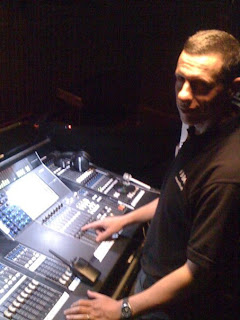Compression is an essential tool in modern sound engineering. Most commercial recordings will have compression on just about every instrument. In the world of live sound, many amateurs do not correctly understand the best use for compression.
Compression should be used in the first instance to help achieve a sound without harsh or unexpected peaks that cut though and ‘grate’ on ones ears. The human ear is actually more sensitive to these mid-range frequencies. The main culprit here are vocals. This is because vocals have a lot of mid-range frequency content, and because singers (even good singers) often unintentionally vary the distance from their mouth to the microphone, effectively giving their voice even greater dynamic range.
Adding compression limits the dynamic range, evens out the small variation in microphone position, and provides a smoother sound for the audience. You can achieve a similar effect by ‘riding’ the fader on the vocals and listening, but it’s pretty hard work, and the singer can catch you out.
suggested settings for vocal compression:
- Ratio 3.5:1
- Adjust threshold so the gain reduction is showing 3-9 dB during singing.
- Adjust the limiter so it cuts in only on the peaks, if at all.
suggested settings for tie clip mic:
- Ratio 8:1
- Adjust threshold so the gain reduction is showing 3dB or less during talking
- Adjust the limiter so it cuts in when the gain reduction gets to 9dB (un-clip the mic and move it closer to your mouth to do this)
suggested settings for bass guitar, or electric guitar:
- Ratio 2.5:1
- Adjust threshold so the gain reduction is showing 3-6dB during playing
suggested settings for acoustic guitar:
- Ratio 4:1
- Adjust threshold so the gain reduction is showing 3-6dB during playing
- Set the limiter to cut in when the gain reduction gets to 9dB
It’s important to remember that using a compressor on an insert will affect the signal sent to the monitors as well. Too much vocal compression may be annoying for an experienced vocalist who expects the monitor to get louder as they approach the mic. Although, in the case of an experienced vocalist, less compression (lower ratio) is normally needed to reign in the sound!
Use of the attack and release controls can change the way the compression behaves. It takes a while to become familiar with the effect of the controls, and with what works and what doesn’t. In most cases, a fairly fast attack and a medium or slow release is the way to go. We would suggest you leave your compressor set on auto if it has this feature, and if not, leave the controls at 12 o’clock!!
Compressors can be used for a variety of other applications, even across a whole mix. This can have un predictable effects – in general it’s best to restrict the use of compression to a few key channels, unless you really know what you’re doing!









